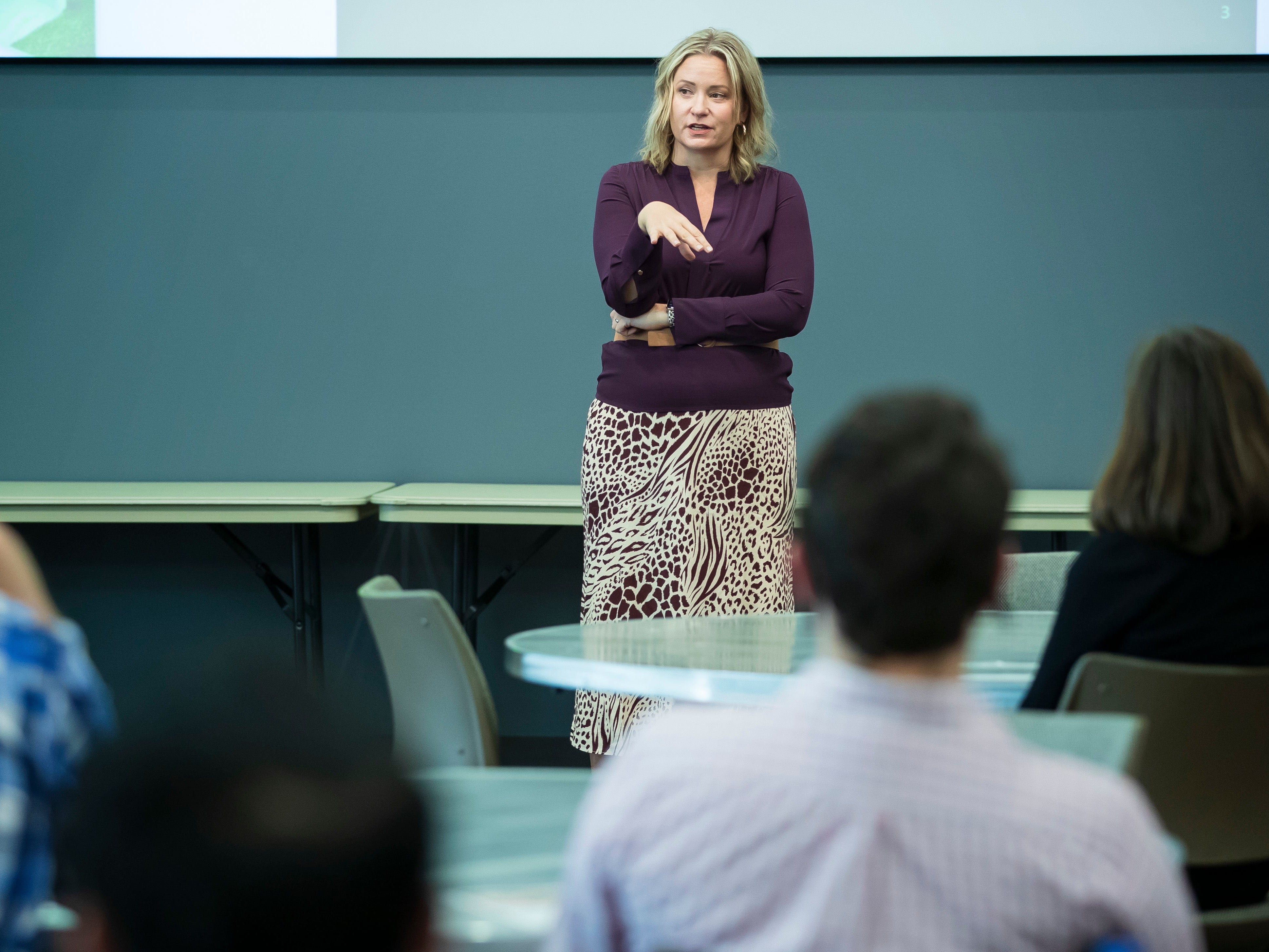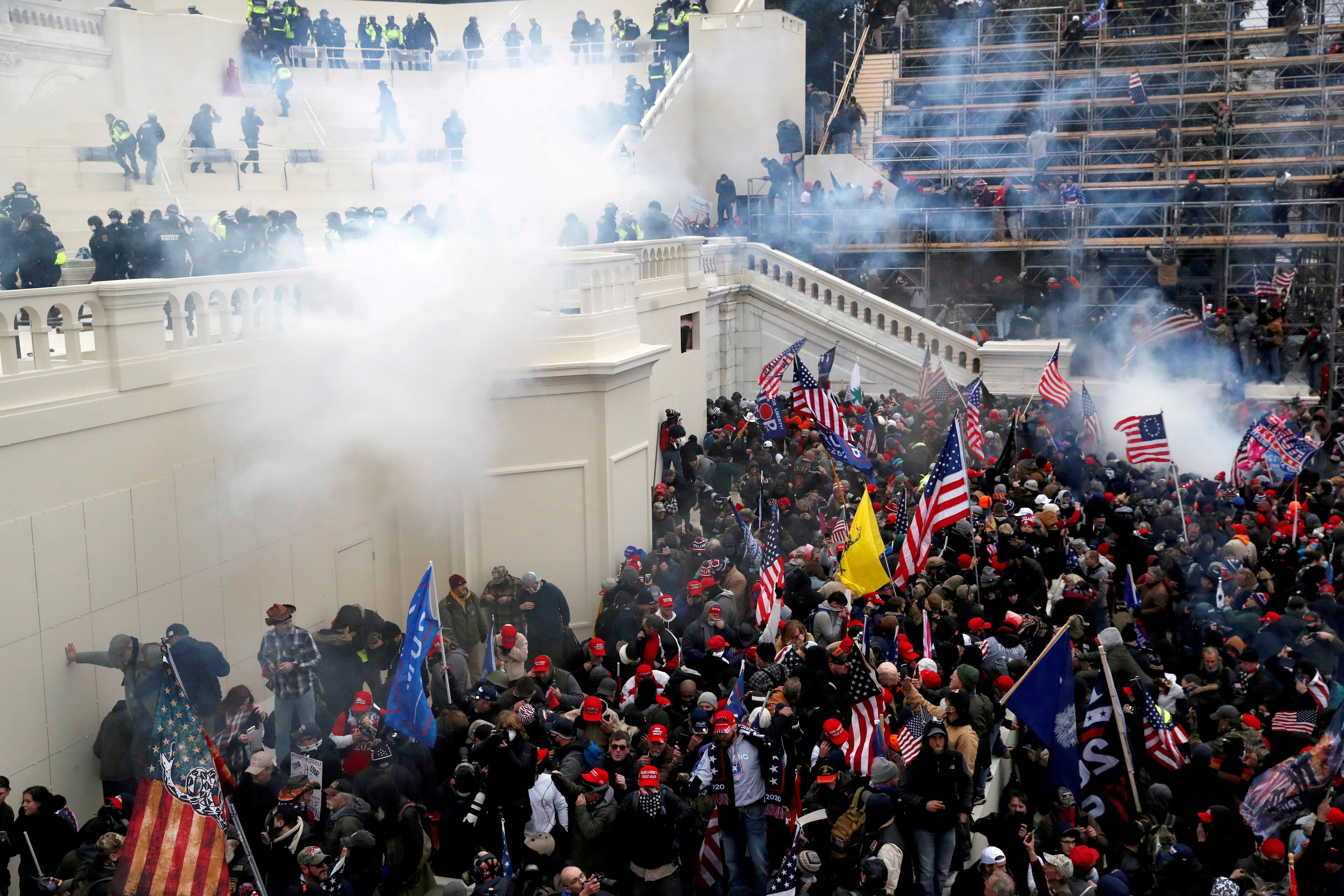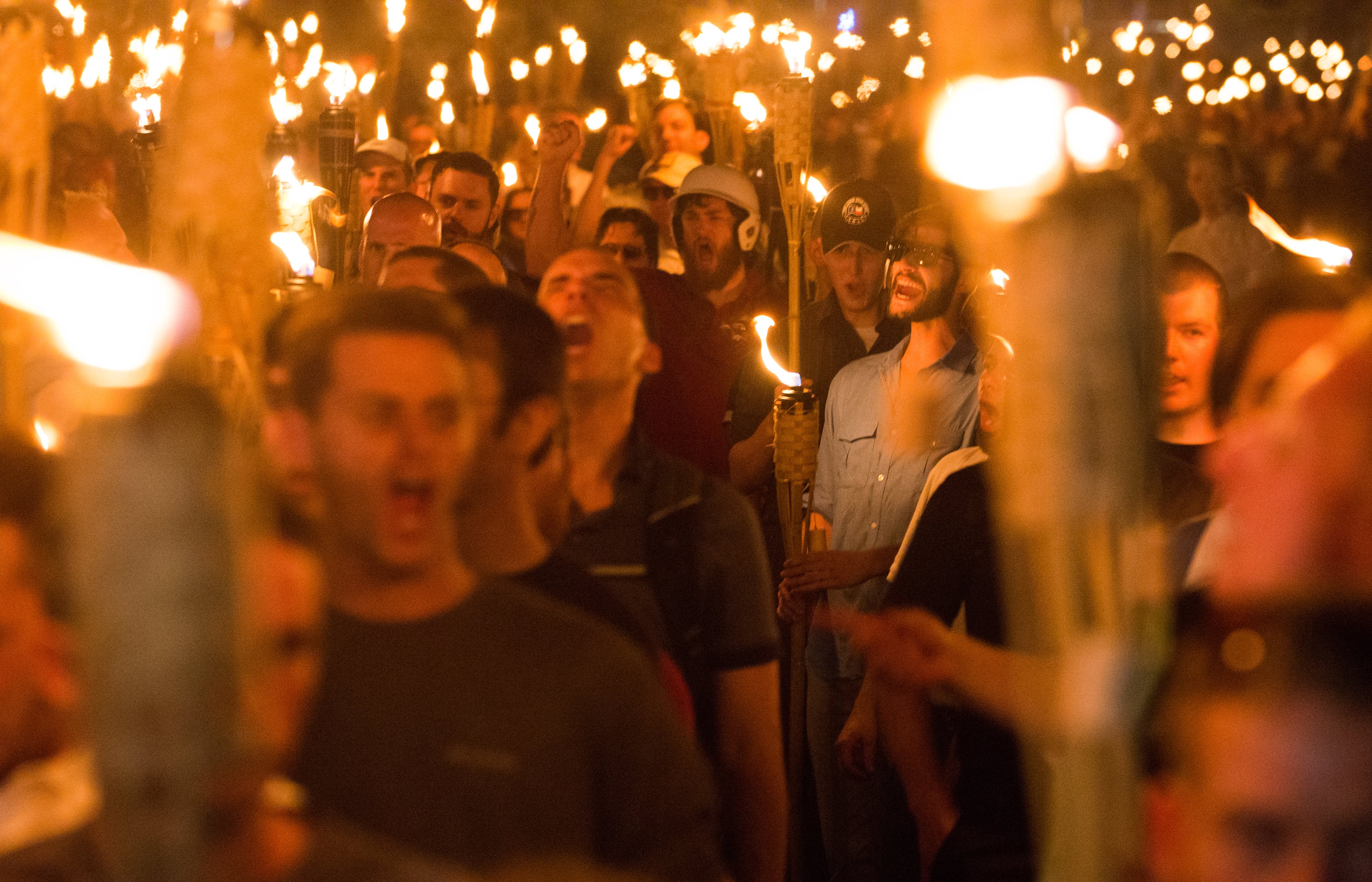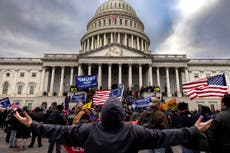How Nebraska became a secret weapon in the fight against domestic terror
A new research hub in America’s heartland is searching for creative ways to fight terror, writes Richard Hall


When rioters stormed the US Capitol in January this year to stop the certification of the presidential election, Dr Gina Ligon saw something familiar. She recognised in the crowd the same boiling anger that led Timothy McVeigh to blow up a federal building in her native Oklahoma when she was just a teenager. And she saw among its leaders the same symptoms of radicalisation that she had studied in her years as a terrorism researcher.
It was also a validation of the work she and her colleagues had set out to do less than a year before, when they were awarded tens of millions of dollars by the US government to better anticipate and understand terror threats to the US, including from domestic extremists.
“It added a whole new importance to the work,” she tells The Independent in her office at the University of Nebraska at Omaha. “I was relieved when the inauguration came and went and there was no fatality associated with it. I was poised and ready in a lot of ways for that.”
For decades, the fight against terrorism has been shaped by the past. The 11 September attacks set the course for a generation of researchers, law enforcement officials and policy makers. But a relentless focus on the threat of Islamist terror left blind spots at home. As a result, in the subsequent years, the threat of domestic extremism was overlooked even as it grew more deadly.
That is now changing. The attack on the US Capitol was a wake-up call for many, and vindication for others. The Federal Bureau of Investigation (FBI) has since doubled its domestic terrorism caseload. In June this year, the White House published its first ever national strategy for countering domestic terrorism.
How experts study terrorism is changing, too. The creation of a multi-million dollar terrorism research hub in the middle of America, which Dr Ligon now leads, is perhaps the clearest indication of that change.
Based at the University of Nebraska at Omaha, the National Counterterrorism Innovation, Technology, and Education Centre (NCITE) is searching for new ways to tackle terror threats at home and abroad. It was launched in 2020 with a $36.5m (£27.3m) grant from the Department of Homeland Security (DHS) and a mandate to research solutions that law enforcement may not have the time or expertise to explore.
“We look at terrorist innovation: how we can stay ahead of it, and how we can help the government anticipate it,” Dr Ligon, director of the NCITE, says.
“Many times people have looked at what’s happened before and over-prepared for that. Take our TSA, for example. We are very prepared for an attack from the air right now, but how prepared are we for a drone swarm?”
The centre aims to be very different in more ways than one, according to Dr Ligon. It has brought in academics from fields not usually associated with terror research, among them criminologists, computer engineers, systems designers and organisational psychologists like Dr Ligon.
In a gleaming new wing of the university’s business school, where NCITE is currently housed, an IT professor and a criminologist are working to create a chatbot for members of the public to report suspicious activity. Along the hallway, a team of students is examining calls for violence among key figures in America’s domestic terrorism ecosystem in the months leading up to the 6 January siege. Another team is studying how people respond to a family member who begins to identify with white supremacist extremism.
Some of the research sounds like it was lifted from a sci-fi movie. Dr Sam Hunter, another organisational psychologist who moved to NCITE six months ago, is studying ways to interrupt “malevolent creativity” in order to stop potential terrorists from following a path that might lead them to carry out an attack.
The potential applications are equally mind-bending. A better understanding of malevolent creativity, for example, could allow authorities to change potential terrorist behaviour. Law enforcement might be able to use the media to influence a would-be attacker to buy a certain product, which would allow them to be more easily tracked.
“I think an advantage of being an academic institution is we get to push boundaries and think about five or 10 years down the road, or about things that are on the edge,” says Dr Hunter.
“But then we also have to turn around and say, what’s the practical application? Some of the work is very directly applied to a specific problem. And then some of it is forward-thinking, so that we can be a little bit more creative and innovative,” he adds.
The University of Nebraska is the hub for the centre, but the entire project is made up of more than 50 academics across 18 universities. The work underway across that network represents a shift not just in method, but in focus. Domestic terror is no longer an afterthought.
A team at King’s College London is examining transnational influence between jihadist groups in the UK and right-wing groups in the US. George Washington University in Washington DC, which has run a comprehensive project tracking Isis-related terrorism cases through the US courts, is now also tracking the more than 600 criminal cases related to the 6 January Capitol attack. Here in Nebraska, researchers are looking into how to better support communities where extremists will re-enter after prison.

The field of terrorism research is playing catch-up in this regard. The US national security apparatus was slow to adjust to the rise of domestic extremism in America in the years after 9/11. In the wake of the Capitol attack, Martha Crenshaw, one of the foremost terror experts in the United States, likened the field to “an aircraft carrier, slow to turn.”
“Our preoccupation since the 11 September attacks with the Islamist and jihadist threat may have blinded us to the fact that terrorism can start at home, with familiar ideologies,” she wrote in The New York Times.
The data was there all along. Since 9/11, jihadists have killed 107 people inside the US, according to the New America think tank. The death toll from far-right terrorism, including from anti-government, militia, white supremacist and anti-abortion violence, was 114 people.
Both Dr Ligon and Dr Hunter trace their early interest in the field to domestic threats. Dr Hunter grew up in Michigan, which anti-government extremists have long favoured as a hub. Dr Ligon was in high school when domestic terrorist McVeigh blew up the Alfred P Murrah Federal Building in Oklahoma City in 1995, killing 168 people. She visited the site of the bombing and stood before the wreckage the next day.
“I remember in the days following everyone had assumed it was Islamic extremists,” she says. “Then when they showed pictures of the person they’d apprehended he was this blonde kid, light eyes and an underbite, former army. It was a formative experience to know that this person was an American and had attacked America.”
Twenty-six years later, when Dr Ligon was pitching the idea for an anti-terror research hub in Nebraska to the DHS, she said her team would do all it could to stop the next McVeigh. On 6 January 2021, when she watched the Capitol building being stormed, her mind went back.
“It reminded me of Oklahoma City,” she says. “I think when you use violence as an instrument to achieve your ideological goals, to me, that’s like Timothy McVeigh.”
At a time when the direction of terror research is changing, so too are the people who do that research. For the last 20 years, counterterrorism has largely been dominated by the memory and trauma of 9/11. But many of the students here at this new anti-terror research hub are too young to remember that day. The defining event of their lifetime may be the 6 January attack. That has potential implications for identifying and understanding future threats.
“I no longer have a single student in my classes that remember 9/11,” says Kat Parsons, a research associate in criminology at the centre. “The younger kids have a better appreciation for the domestic terror threat because that’s what they’ve grown up in and seen sort of start to spread and manifest.”
That distance has also given the students a unique insight into what followed, according to researcher Dr Erin Kearns.
“I think they have a better appreciation for how messed up some of the early policies were after 9/11. I used to get a lot of pushback about that, they were clear that it was a bad idea,” she says.

Parsons, Dr Kearns and their colleague Clara Braun all work in the field of criminology. They were all drawn to the centre by its efforts to broaden and diversify the kind of people that engage in terrorism research.
“I think that the best part about the centre is the interdisciplinary nature,” says Braun. “Everyone comes from so many different backgrounds, so many different places, and it helps shape how people are approaching problem solving.”
Kearns and Parsons both come from Ohio, and Braun is from a military family and has lived all over. That gives them a “very different lived experience” to those who have traditionally dominated the field, says Dr Kearns. “Even driving from Ohio to here and how many various white supremacist bumper stickers that you see in cars. If you’re spending all of your time in big cities you’re just not seeing that,” she says.
Creating an anti-terror hub in the middle of the country was in fact a key part of the pitch to the DHS, says Dr Ligon.
“We told them that if you really want the out of the box, you’ve got to get out of the beltway,” she says. “We represent the middle of America – we’re a blue city in a red state, and we’re literally in the centre of the country. There’s so much polarisation on the coast right now. I think having us here in the middle, we can draw on researchers from across the country in a way that feels more apolitical.”
That polarisation may be difficult to avoid entirely. Although the centre won its funding during the Trump administration, and its researchers are working on projects related to Antifa and Islamist extremism, the nature of the terror threat today in the wake of the Capitol attack means a significant part of its research is focused on supporters of one party, or one former president to be precise. Some prominent Republicans have sought to downplay the significance of the Capitol attack, and have portrayed the charges against them as politically motivated. The person who many see as the primary instigator of the attack, former US president Donald Trump, is still the de-facto leader of the party.
“I actually take great offence when people are cavalier about 6 January – when they call them rioters or try to downplay it,” Dr Ligon says. “There was a fairly large group of individuals, around 600 and counting now, who were willing to break the law on behalf of that belief system. So you can hold all the extremist beliefs you want, but when you act in a way that is against the law or violent, that is when you become our mandate to study.”
Through that study, Dr Ligon says, the centre can help the workforce currently in the trenches of the anti-terror fight.
“They’re under-resourced, especially on the domestic terrorism side. If you look at the money we have to fight international terrorist groups versus what we are spending on domestic terrorism in the US, it is wildly underfunded.”
The DHS funding is set to last for 10 years. Whoever the next president may be, Dr Ligon says, the work will continue.
“This centre is not for the president, it’s for the federal civil servants that fight terrorism. I’ve worked with them for years through the Obama administration, the Trump administration, and now through the Biden administration. They’re still there and they hold the line.”
Join our commenting forum
Join thought-provoking conversations, follow other Independent readers and see their replies
Comments

Bookmark popover
Removed from bookmarks